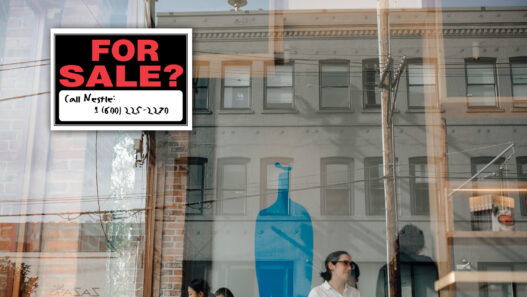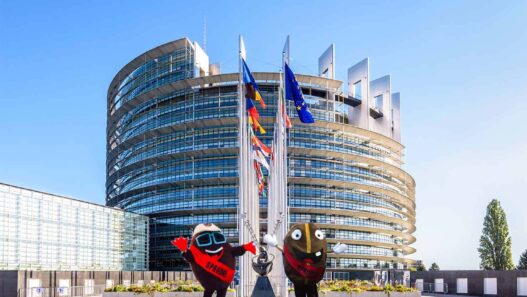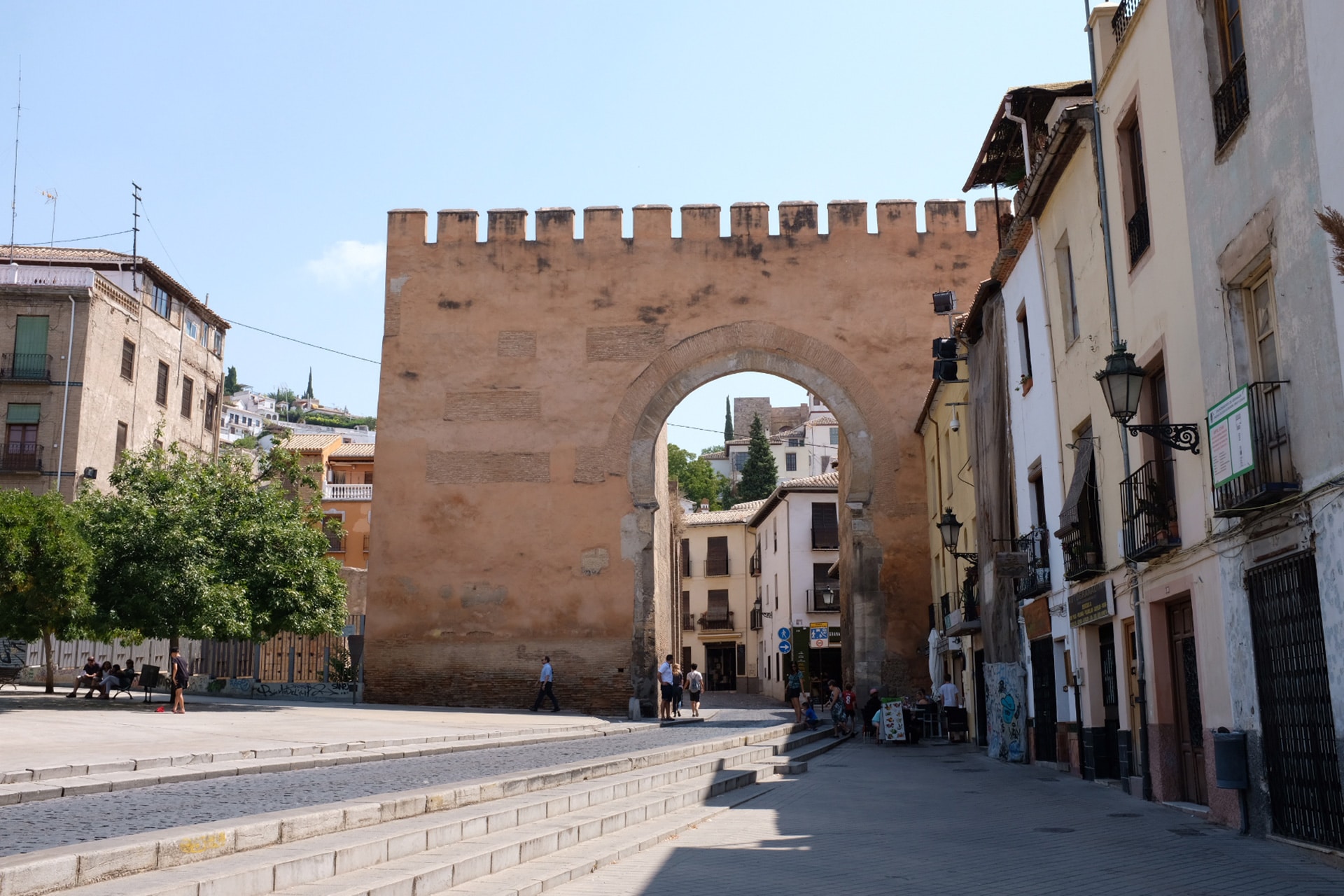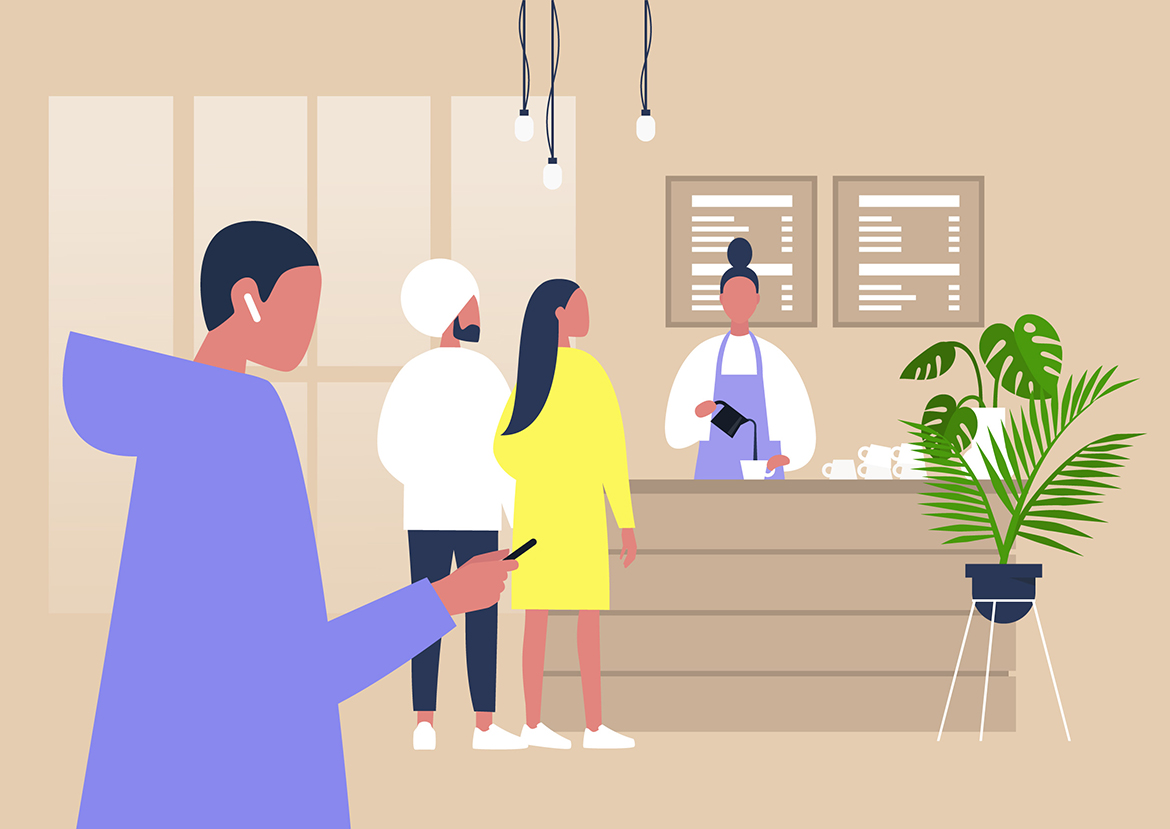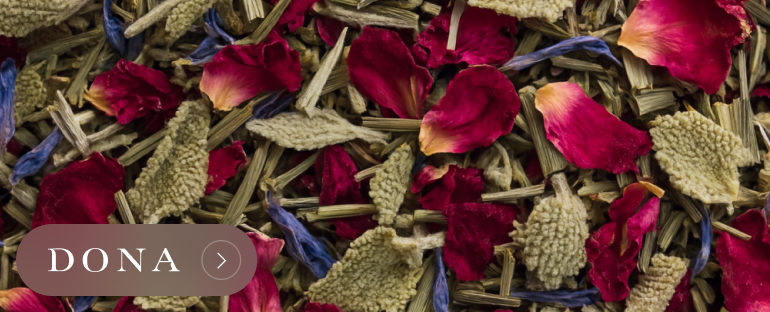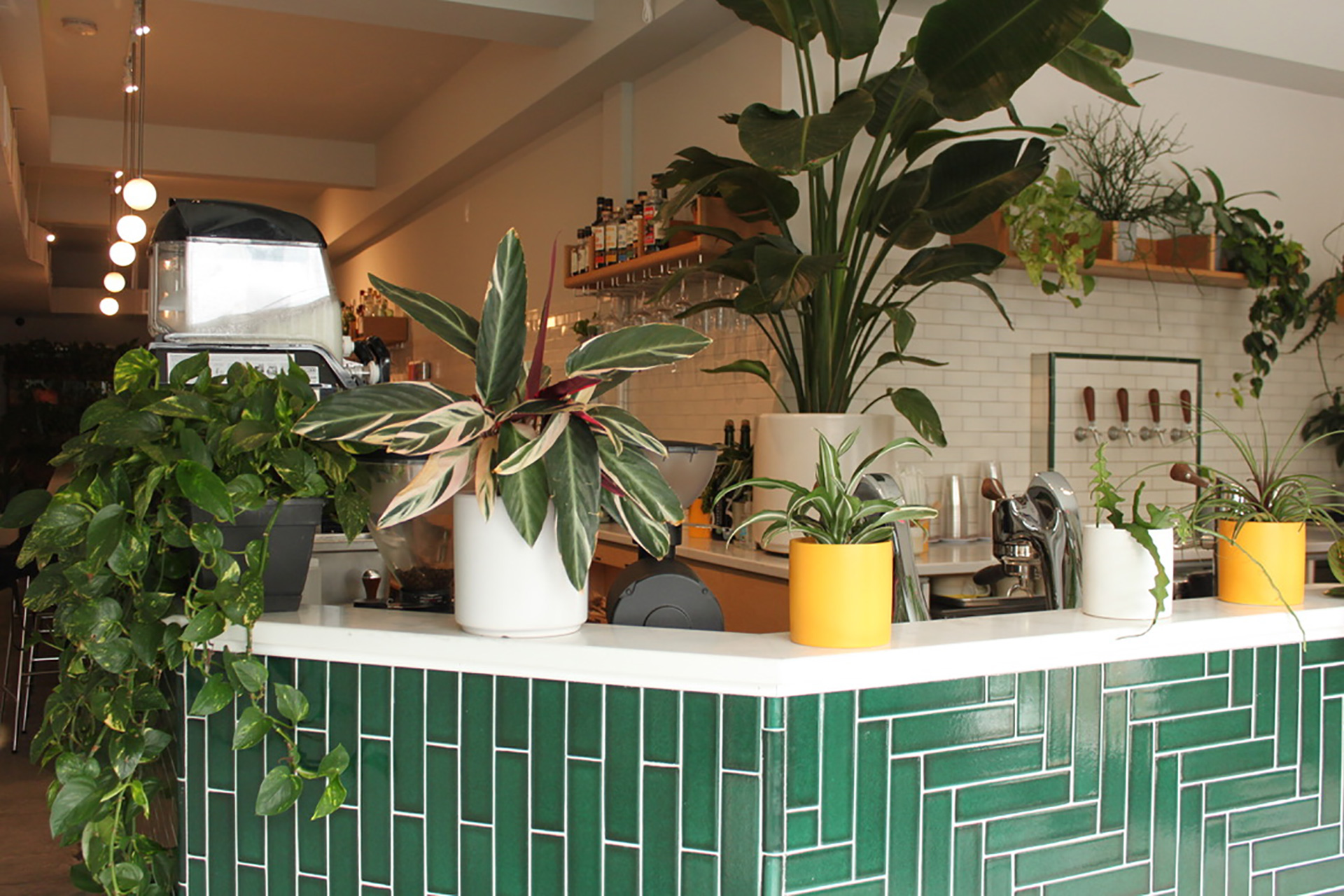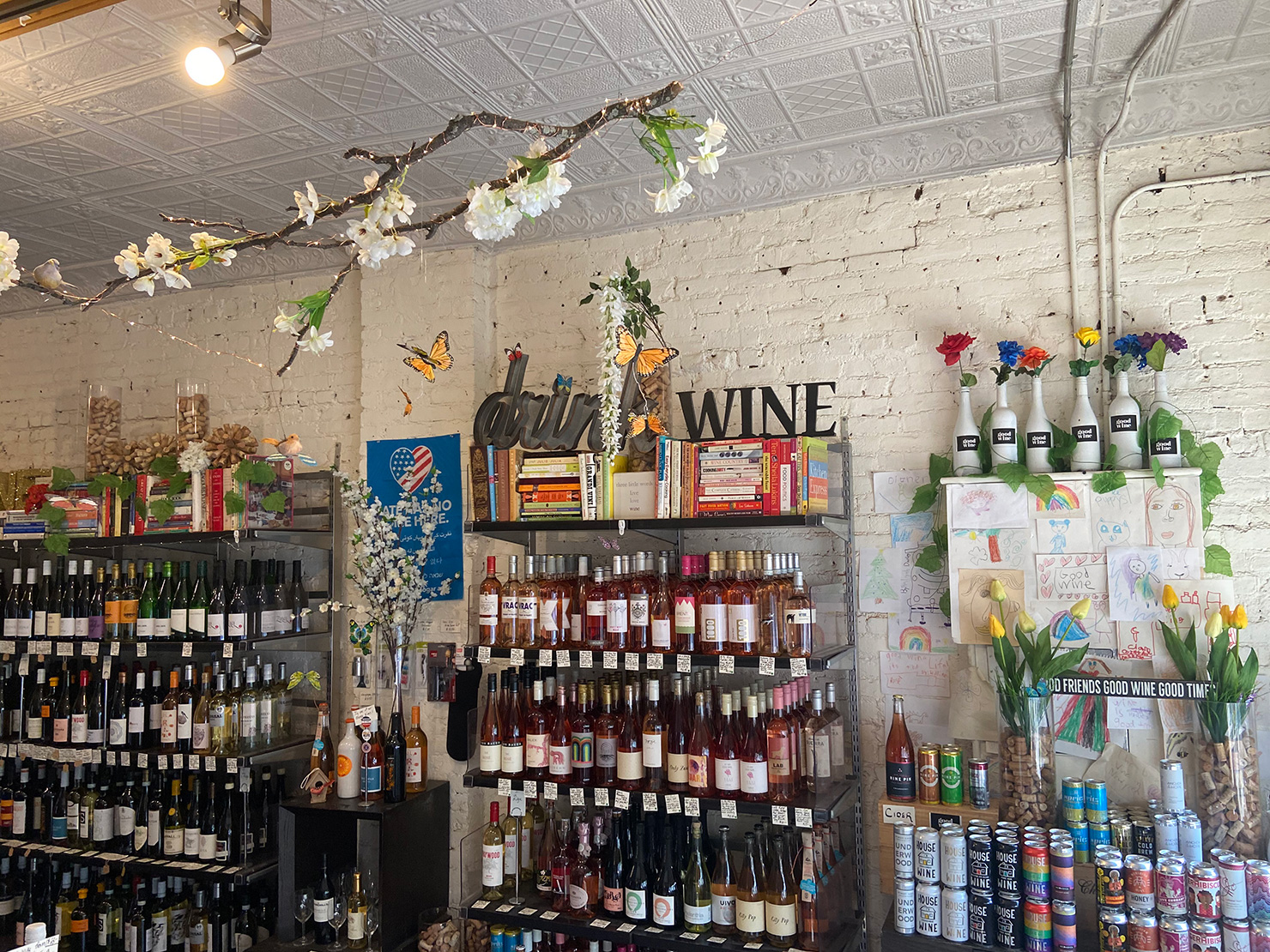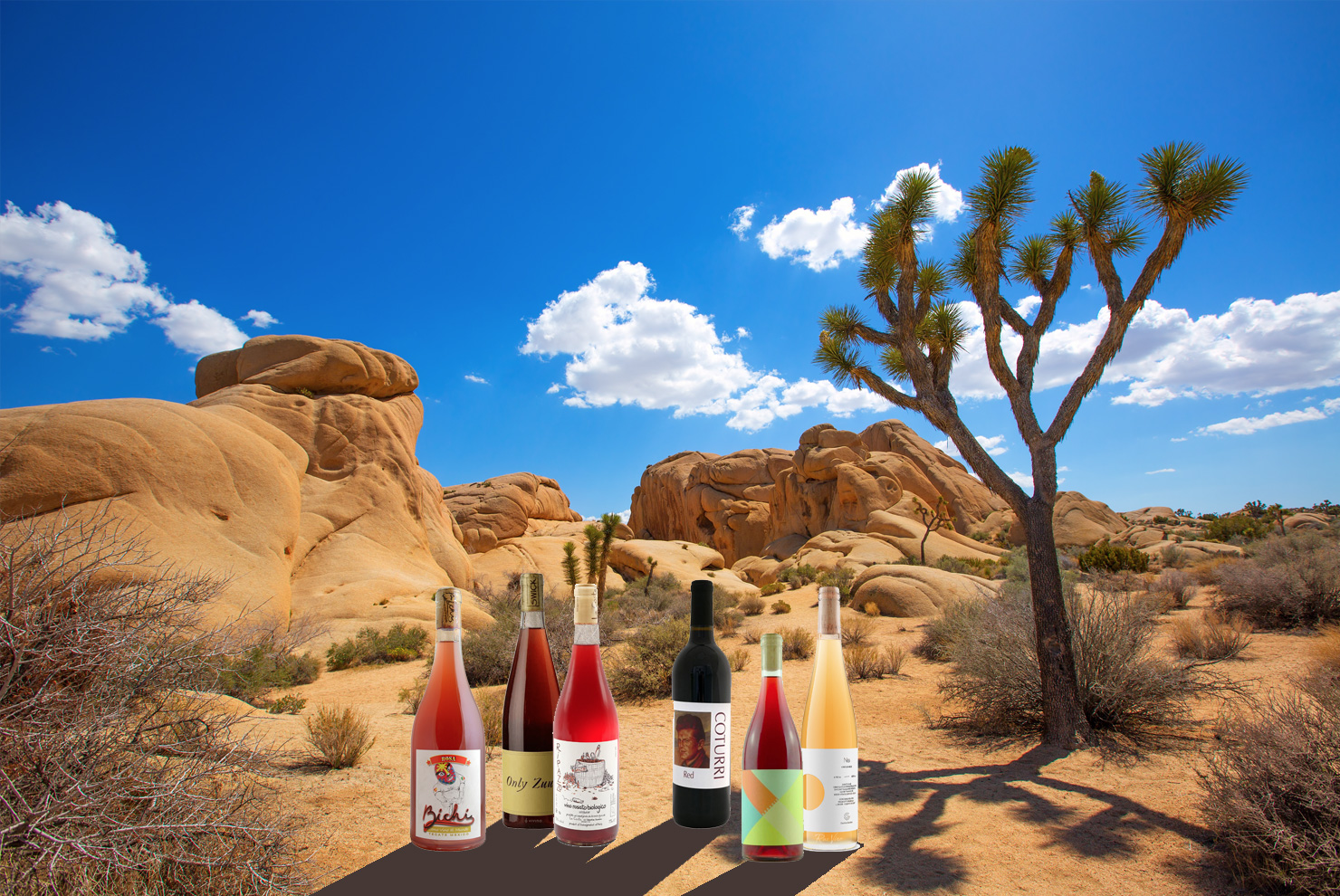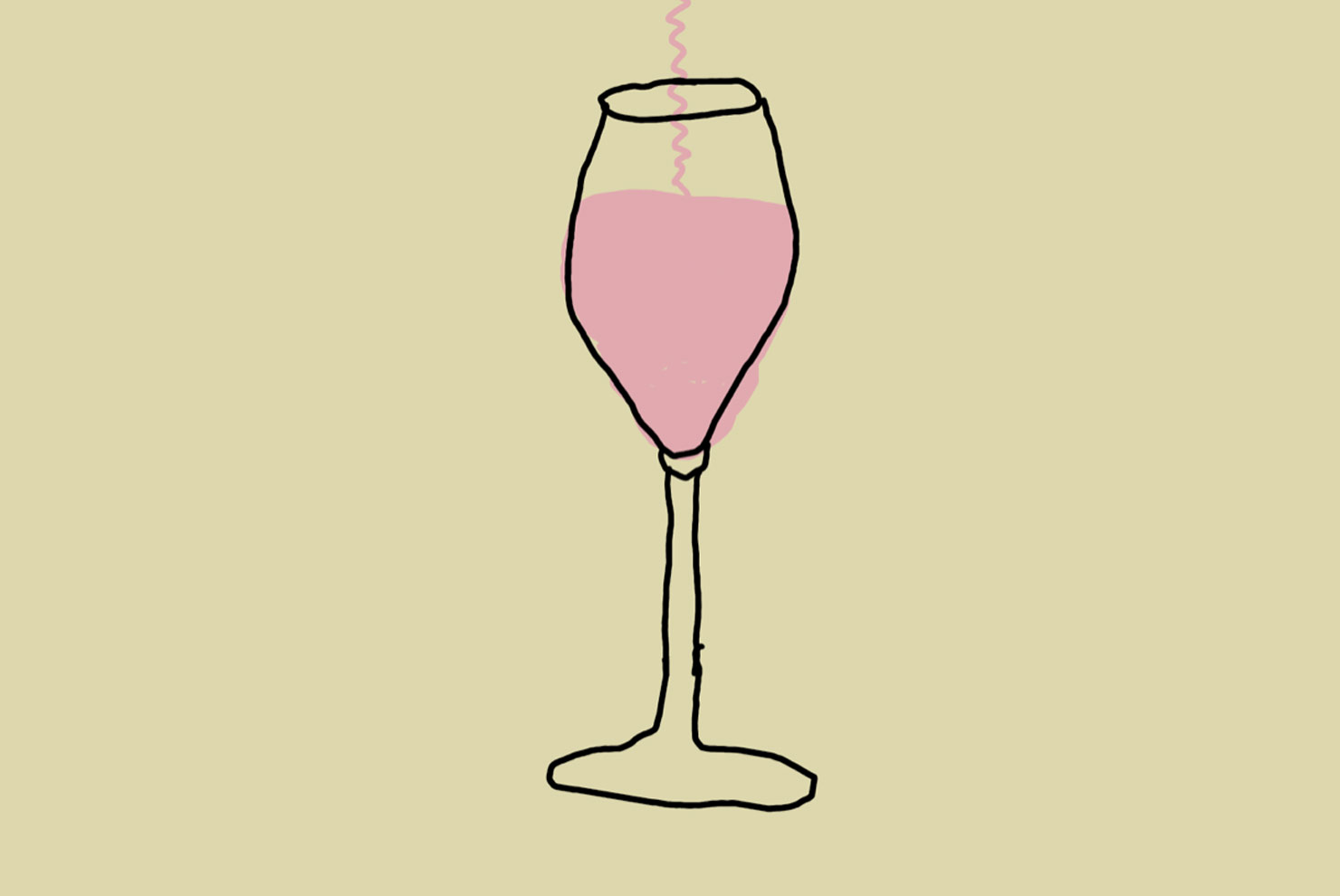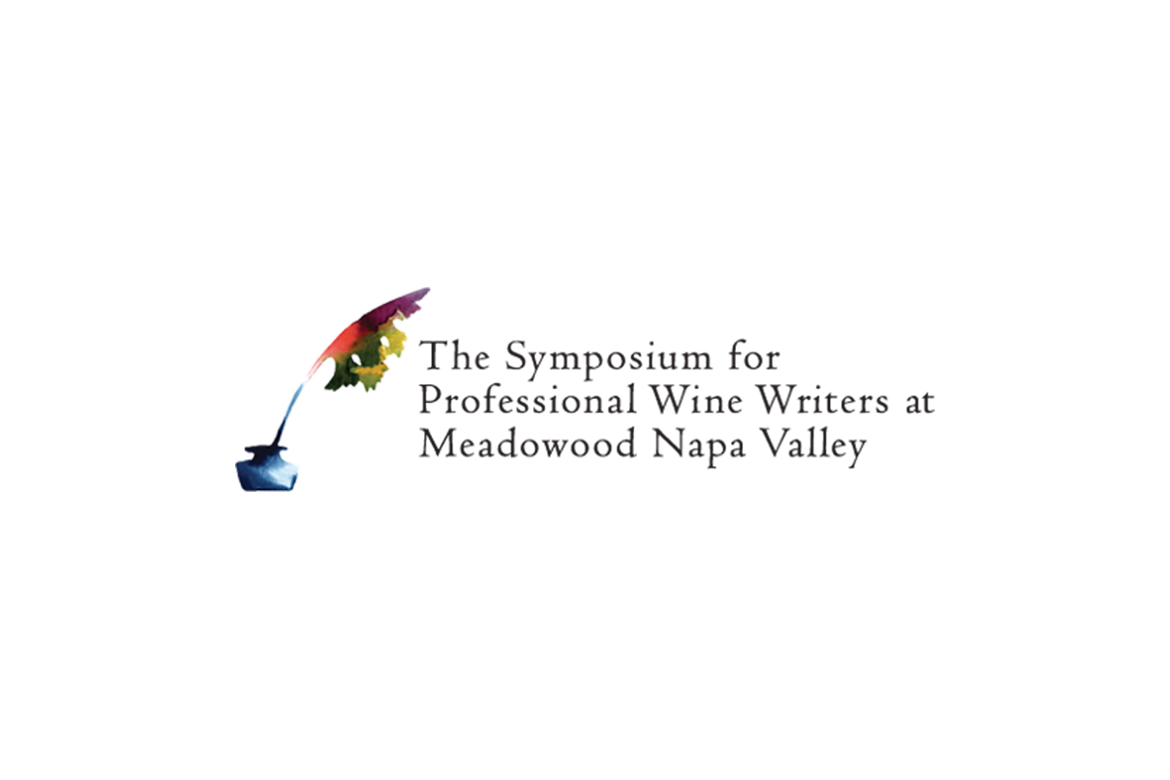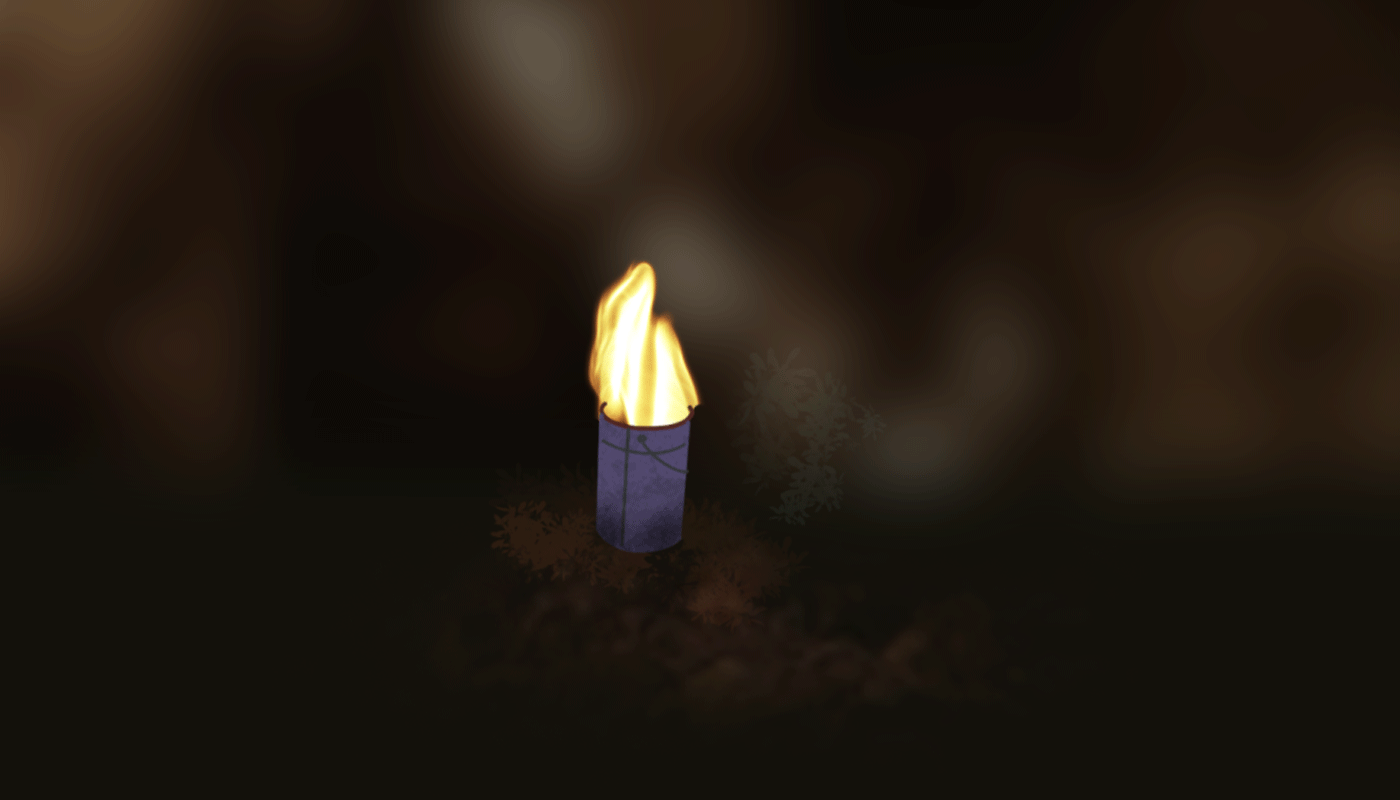The Gate of Elvira quite literally gives visitors to Granada the chance to look through history. When it was built in the eleventh century during the reign of Sultan Yusuf I, the gate was the main entrance into the walled city—then the capital of the Nasrid dynasty. After the Reconquista, Granada once again came under Catholic rule, but the Moorish architecture that permeates the labyrinthine Albaicín, or old town, remains a part of the city’s mystique. Today, if you walk through that gate, you’ll immediately encounter Al Sur de Granada, a cafe and market with a broad array of specialities, listed in bold letters on its olive green walls.
Natural wine, specialty coffee, bean-to-bar chocolate, raw milk cheese, artisan olive oil: the impressive list of products reflects the diverse interests of owner Alba Aponte, who bought Al Sur when she moved home after a stint in Cuba.
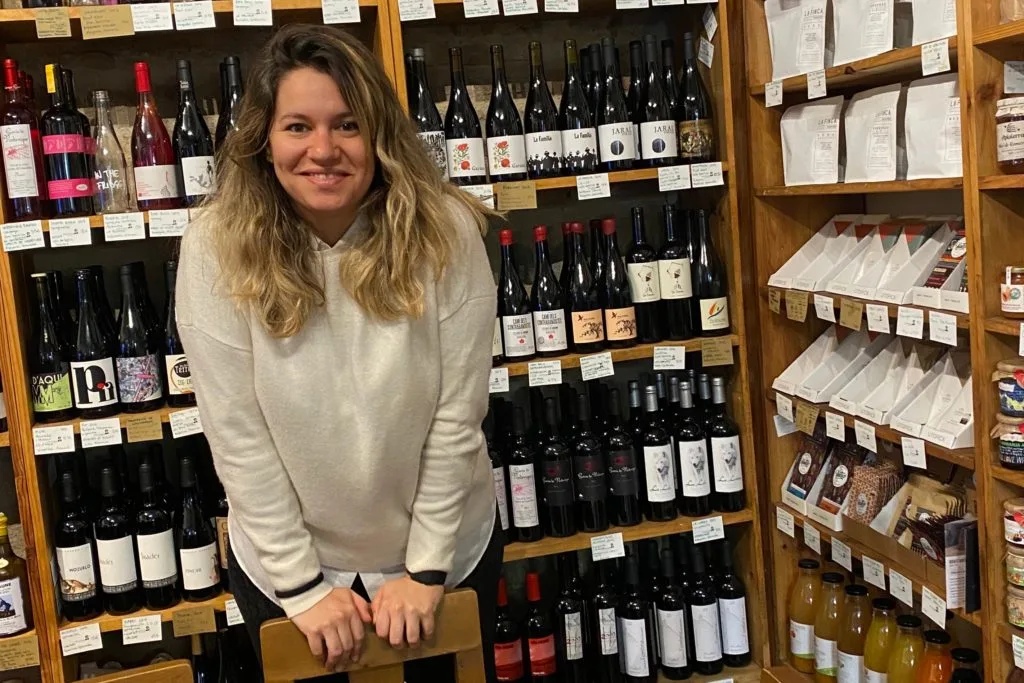
“That was 11 years ago and the business every day gets more and more specialized,” she says.
“At the beginning, the theme was local products and with time I realized I wanted local but all artisan and natural.”
Today, Al Sur de Grenada is a cafe in the classic, European sense. Coffee is provided by local roaster La Finca Coffee, and like most places in Southern Europe, coffee means espresso. But in Spain, one can, and people do, drink wine at any time of the day, and the lion’s share of the cafe space is dedicated to natural wine, defined very strictly as zero added sulfites.
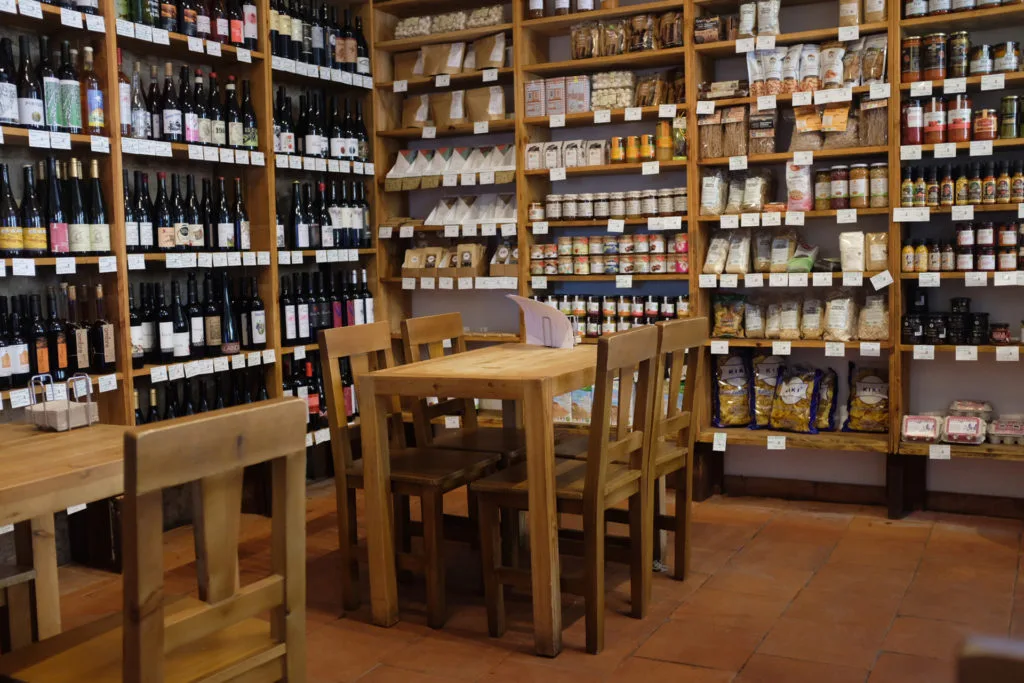
Whether it’s Italy’s Lammidia or France’s Anders Frederik Steen, there’s much on the shelf that will be familiar to natural wine drinkers. But for visitors, the real highlight is the extensive selection of Spanish natural vignerons, with a special emphasis on Granada and the rest of Andalusia. In fact, you would be hard-pressed to find a natural vigneron in Andalusia not on Al Sur’s shelves.
“Barranco Oscuro, Cauzón, Marenas, Fernando Angulo, and Verdevique are my friends,” says Aponte.
In wine circles, Andalusia is best known for sherry, and Al Sur features a small selection of sherries that meet Aponte’s exacting standards. A personal favorite was Las Alegrias 2014 from Fernando Angulo, who makes wine in Andalusia’s Sanlúcar de Barrameda region under the name Alba Viticultores. Although Alba Viticultores is located within the “sherry triangle,” Angulo isn’t able to label it as such, since his wines forego fortification with brandy. Las Alegrias 2014 weighs in at 13.3% alcohol, falling short of the required 15 percent. The wine spends four years under flor, developing the rich oxidative flavors sherry lovers crave. In the glass, it’s candied ginger and hazelnut, with a salty, briny edge—the perfect accompaniment to a plate of jamon Iberico.
Those searching for something further afield will not be disappointed either. Coferments from Catalonia, orange wine from Galicia, natural ciders from Basque Country: Aponte is not afraid to explore the fringes of Spanish wine culture.
“My favorite winemakers are super experimental and very avant-garde,” says Aponte.
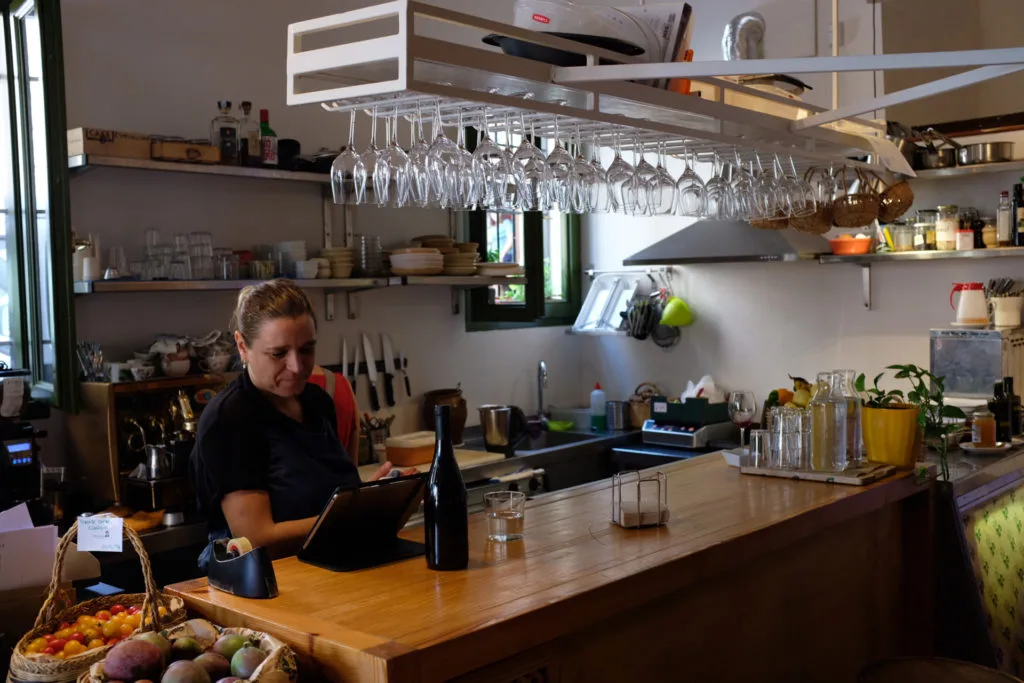
Fans of the avant-garde need look no further than Catalonian vignerons Cellar La Salada. A particular favorite cuvée I tried was “Roig Boig,” a field blend of eight different red and white grape varieties that comes in still and méthod ancestral formats. The wine is 90% direct press and is perhaps best classified as a rosé. It’s the juicy summer quaffer perfect for taking the edge off a Spanish summer, with just enough funk to scare off conventional wine drinkers.
For those looking for something a little more approachable, and, as it turns out, closer to home, Barranco Oscuro’s “Varetúo” offers unadulterated winemaking in a more classical style. Barranco Oscuro is an estate owned by Manuel Valenzuela, situated just on the other side of the Sierra Nevada mountains from Granada. Valenzuela has been organic farming since 1979 and is considered a pioneer in the Spanish natural wine scene.
Although Tempranillo is a grape that gets little love in natural wine circles, Barranco Oscuro’s take reveals a purity and elegance that defies stereotypes. Certainly, the trademark red fruits are there, but without the over-ripe jammy notes. The herbal, rustic side of the grape is there too, but it plays a supporting role. A touch of Brettanomyces lets you know this wine is alive.
For those looking for a glass rather than a bottle, Al Sur offers many of their best wines by the glass, accompanied by a simple, but excellently executed food menu. Although Granada is famous for its tapas bars, for Aponte, the pressure to provide a free tapa with each drink keeps restaurants from using the best ingredients.
“Most people are only interested in food that is given away—for free!” She says. “So obviously this has been a massive problem in such an amazing city.”
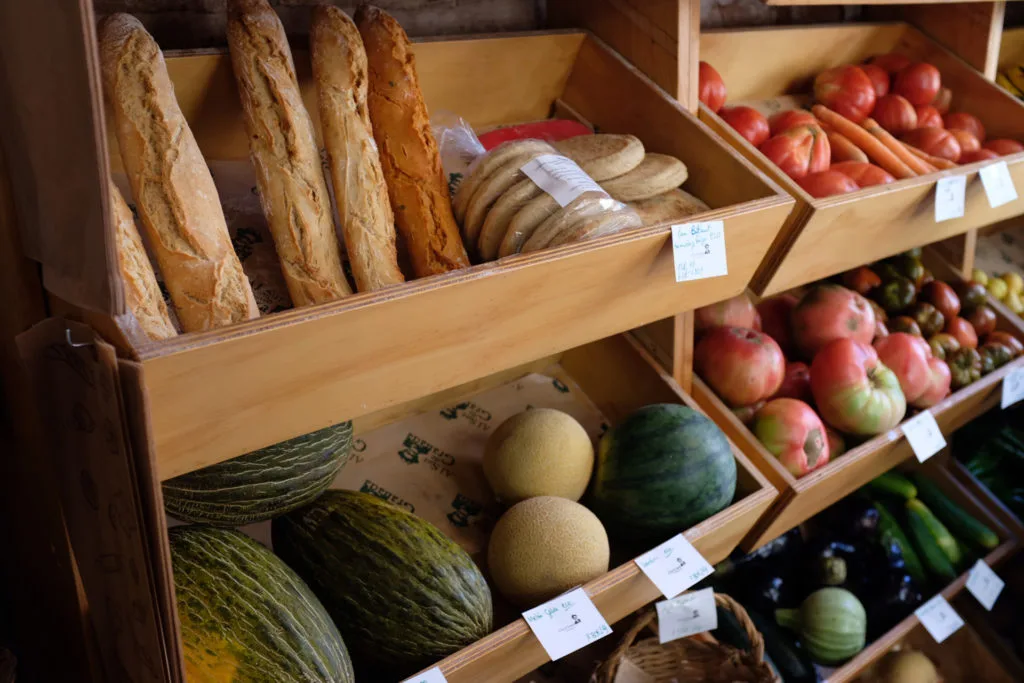
Aponte bucks this trend with a small seasonal menu, appropriately priced considering the ingredients come from small, local producers. For a contemporary take on an Andalusian classic, the watermelon gazpacho is a sweet and spicy appetizer, served in a glass with a red pepper garnish. For something more substantial, the four tomato salad highlights the diversity of local tomato cultivars, with generous portions of goat cheese for good measure. In all, it’s an impressive program considering everything is made at the bar, in what Aponte calls “a Lego kitchen.”
From Ernest Hemingway to the Clash’s Joe Strummer, Granada has long attracted writers and artists on a journey to find themselves. Al Sur de Granada takes its name from the Spanish title of Gerald Brenan’s memoir, South from Granada. The book recounts the nine years the British writer spent in a small, self-sufficient Andalusian village in the 1920s. For Brenan, the communal nature of Spanish village life was a liberating departure from his strict, individualist upbringing. It’s a fitting name for a cafe that embodies the best of local culinary tradition. Whether or not you find yourself in Granada, you’ll at least find some great Spanish wine.




